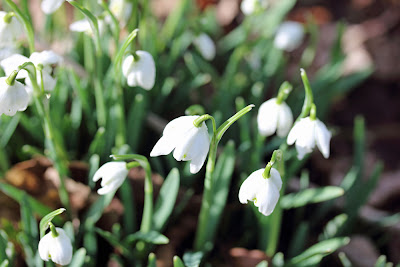 |
| No Matter How Long the Winter, Spring is Sure to Follow by Alyssa Nassner |
I thought that Spring had sprung last Tuesday. After a frosty start the sun came out and the birds were tweeting away. I went for a long walk and the air had started to smell of Spring, and we even heard a woodpecker in the woods. What's more, in the afternoon it was so warm that I was able to sit outdoors without a coat for the first time this year! Unfortunately it all went a bit downhill after that, with a couple of hard frosts, an Arctic wind, and snow showers over the weekend. It's at about this point of the year that I get a little bit desperate for some sunshine. On the plus side, it is now nearly light when my alarm goes off at 6:50 am, and the increasing light has woken me up on a couple of mornings - this is a yearly breakthrough for me as I really struggle to drag myself out of bed when it is still dark.
I blogged about the illustration above by Alyssa Nassner (Small Talk Studio) last year. I think its lovely and just looking at it cheers me up and reminds me that Spring really isn't too far away (22 days to be precise). Sadly, this print is no longer available to buy :(
The primula's have been out for a couple of weeks now. I particularly like the colours of this one. This week I have lots of work to do, however I am hoping to get time to prune the autumn raspberries and keep an eye on the seeds that I sowed the other week.






















